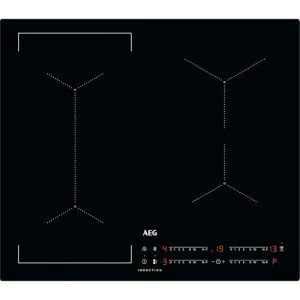Energy-Efficient Induction Hobs: A Comprehensive Guide
Induction hobs have become a popular cooking service among modern families, applauded for their speed, performance, and security. As the world becomes more conscious of energy consumption and ecological sustainability, energy-efficient induction hobs are paving the method for cleaner and more reliable cooking techniques. This post dives into the functions, benefits, and considerations of induction hobs, providing an informative guide for those looking for to make the switch.
What is an Induction Hob?
Induction hobs deal with the principle of electro-magnetic induction. Unlike standard gas or electric hobs, which warm up the cooktop surface, induction hobs generate heat straight in the cookware. This is accomplished through electromagnetic fields that are developed when an induction coil is energized. The benefits of this approach extend beyond efficiency, as it likewise improves safety and cooking efficiency.
Key Features of Induction Hobs
- Fast Cooking: Induction hobs considerably decrease cooking time compared to standard approaches. They can boil water almost twice as fast as electric hobs.
- Energy Efficiency: Approximately 90% of the heat produced is moved directly to the pots and pans, decreasing energy waste.
- Exact Temperature Control: Users can control heat levels with exceptional accuracy, which is particularly advantageous for fragile tasks like simmering and melting.
- Cool Cooktop Surface: The cooktop stays fairly cool, minimizing the risk of burns and making cleansing easier.
- Security Features: Many induction hobs come equipped with automatic shut-off functions, residual heat indicators, and child lock features.
Benefits of Energy-Efficient Induction Hobs
Energy-efficient induction hobs provide various advantages that align with a sustainable way of life. Below are several key benefits:
| Benefit | Description |
|---|---|
| Lower Energy Bills | Taking in less energy equates to lower utility costs. |
| Eco-friendly | Lowered energy usage adds to decrease carbon emissions. |
| Enhanced Cooking Experience | Quick meal preparation and accurate control improves cooking outcomes. |
| More Secure Cooking Environment | Decreased danger of burns and fires due to cool cooktop surfaces. |
| Easy Maintenance | Smooth surfaces are much easier to clean and preserve than standard options. |
Considerations When Choosing Induction Hobs
While the benefits of induction hobs are compelling, potential purchasers need to also think about a number of aspects before purchasing.
- Pots and pans Compatibility: Induction cooking requires magnetic cookware. Users need to ensure their pots and pans work (cast iron and stainless steel are typically ideal).
- Preliminary Cost: Induction hobs can be more expensive in advance than traditional cooking options. However, the long-lasting cost savings on energy costs may offset this preliminary investment.
- Power Supply Needs: Some induction hobs need greater power supply setups, which could involve extra installation expenses.
- Sound Levels: Some users may discover that induction hobs produce a humming sound when in usage, especially with particular types of pots and pans.
Selecting the Right Induction Hob
Buying an induction hob can be a considerable choice, and comprehending the features and specifications can assist in making an informed choice. Here are aspects to think about when choosing the right induction hob:
Size
- Standard Sizes: Induction hobs come in various sizes, generally varying from 30 cm to 90 cm.
- Burners: Consider the variety of cooking zones you need. Smaller sized hobs may have two or three burners, while bigger models typically have 4 or more.
Features
- Touch Control: Modern induction hobs typically include touch-sensitive controls, using a sleek and modern style.
- Smart Features: Some hobs come with wise innovation that integrates with home automation systems for remote control and monitoring.
- Timer Functionality: This enables users to set cooking times, guaranteeing precision without needing continuous guidance.
Brand Reputation and Warranty
Selecting a trusted brand name that offers a solid warranty can be crucial for long-lasting satisfaction. Research study consumer reviews and ask about the manufacturer's service policies.
Energy-efficient induction hobs represent a considerable improvement in cooking technology, weding performance with sustainability. Their quick heating capabilities, precise controls, and safety features make them an attractive alternative for any kitchen area. While the initial costs may be greater, the long-lasting benefits of energy savings and enhanced cooking experiences present a compelling case for making the switch. As families continue to look for methods to minimize their carbon footprint, induction hobs use a useful, modern option.
FAQs
1. What pots and pans works with induction hobs?Induction hobs deal with magnetic products. Pots and pans made from cast iron and particular kinds of stainless steel are ideal. Non-magnetic products like aluminum or glass will not work.
2. Are induction hobs safe for kids?Yes, induction hobs are normally thought about safe for kids. The cooktop remains cool to the touch, and lots of models include safety locks to avoid unintentional operation.
3. Can I install an induction hob myself?It is advised to employ an expert for installation, particularly if your hob requires a greater power supply or complex electrical work.
4. Do induction hobs use a great deal of electrical power?Induction hobs are understood for their energy efficiency; they typically utilize less electrical power compared to traditional electric or gas cooktops since they convert almost 90% of the energy used directly into heat for cooking.
5. How do I clean an induction hob?Cleaning up an induction hob is straightforward. Utilize Induction Hob Comparison or sponge with warm soapy water. Prevent abrasive cleaners which can scratch the surface.

